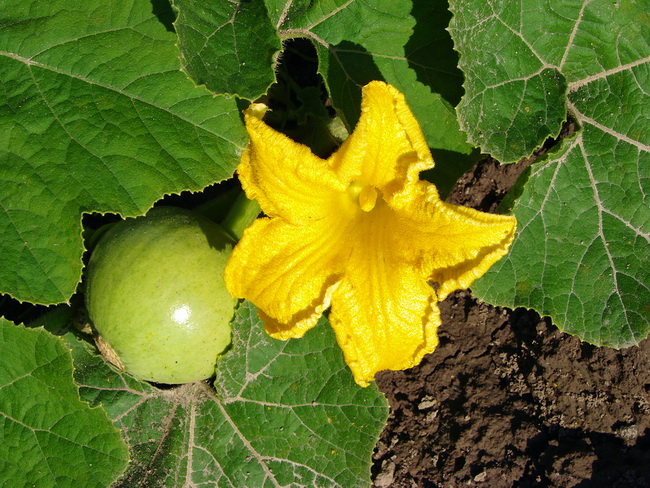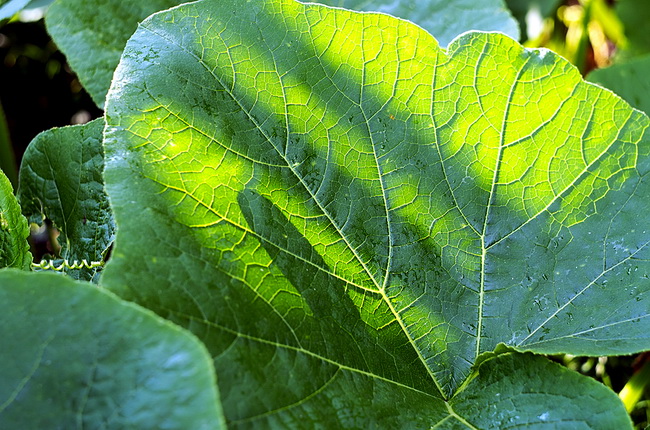- Make It Yourself Lavender Heart-Shaped Bath Bombs!
- 20 Things You Never Knew About “Down There”
- 12 Best Foods For Those Suffering From Arthritis Pain
- 12 Personal Hygiene Mistakes Almost Everyone Makes (Mom Never Told You About #4!)
- 15 Medicinal Plants And Herbs From The Cherokee People
- 12 Mind-Blowing Benefits Of Drinking Coconut Water During Pregnancy
- 12 Outstanding Winter Foods That Won’t Fatten You Up Like A Christmas Turkey
Can You Really Eat Pumpkin Leaves?

Photo credit: bigstock.com
Almost everyone knows the juicy goodness of pumpkins but how many of you know that pumpkin leaves are darn nutritious? If you have ever really looked at a pumpkin leaf, it’s understandable why few people think of eating them. They are covered in fuzz, with a thick, fibrous spine, they certainly don’t look edible the way nasturtiums do.
With a little work, pumpkin leaves are a great way to get some valuable nutrition. Low in calories, pumpkin leaves are high in vitamin C, vitamin A, calcium, and iron.
You probably already know that calcium is important for healthy bones and teeth, and females especially need calcium to avoid osteoporosis (find out top 10 signs you might have osteoporosis). If you don’t want to consume dairy products to get your calcium, pumpkin leaves are a good food to add to your diet.
Vitamin A provides us with healthy eyes and skin, while vitamin C is vital for the healing of wounds and supports the immune system. Your body cannot make vitamin C, it doesn’t even store it, and so you need to get some of this important vitamin every single day.
Take a look at some of the other benefits you can get from eating pumpkin leaves.
1. Lowers cholesterol levels
2. Offers liver protection
3. Pumpkin leaves have antibacterial compounds
4. Rich in iron
5. Known for supporting lactating mothers
6. Improves the immune system
7. Good source of protein
8. Improves fertility in men
Continue to Page 2

Photo credit: bigstock.com
Pumpkin leaves are highly valued in African countries. Called “ugu,” they are a commercial crop and are especially sought after by new mothers. The leaves are high in antioxidants as well as beta carotene.
You should really try pumpkin leaves if you find that many other greens are too bitter for your taste. These yummy leaves have no bitterness and some say that once they are cooked, they are actually a bit on the sweet side. Others compare their taste to a mixture of broccoli and green beans.
If you are lucky enough to have space to grow pumpkins, consider giving fresh pumpkin leaves a try, you can also buy them in many health food or ethnic food stores.
If you are planning on eating the leaves from plants in your own garden, cut the leaf and the stem. Hold by the stem so that the leaf is upside down. If you look, you will be able to see that the stem is hollow. Use your nail to split the stem in half and then snap it back so that it breaks cleanly. Pull the fibers from the back of the leaf and the outside of the stem. Throw the fibers away. Make yourself a good sized stack of leaves because like most greens, they tend to cook down.
In many African countries, pumpkin leaves are simmered with tomatoes until the leaves are soft and tender. Many Italian pasta recipes call for the leaves to be blanched quickly, then fried with oil and garlic, then tossed with well chopped tomatoes and garlic. In Malaysia smaller, more tender pumpkin leaves are mixed with garlic, onions, and anchovies, all simmered together in a type of fish stew that uses coconut milk instead of water.
SEE ALSO: Cabbage, a Natural Medicine for Cancer and Diabetes
Check the internet for a variety of recipes and there is certainly one that will suit your tastes.
































